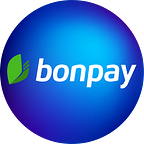Everything you need to know about DAICO — new concept of ICO, released by young genius Vitalik Buterin
ICOs — relatively new way of fundraising for fintech startups — became extremely popular along with the cryptocurrency boom. You can see these three magical letters in every second ad on the Internet. Not only young projects decide to get start capital for implementing their ambitious ideas, but also old corporations try to return positions, announcing ICO (like Kodak, for example).
ICO seemed to be the perfect invention both for developers and investors. Creators have a chance to get money, if they are convincing enough, while users can invest in the project, which they like, supporting it and, if lucky, receiving a profit. But the ubiquity of ICO attracted a lot of frauds, who, by creating a simple promo-site and whitepaper (that usually consists of pieces from another whitepapers), managed to raise huge sums of money, which they successfully packed into their new Lambo and, happy and satisfied, drove off to the sunset in a cloud of dust. Dissatisfaction of the potential investors was getting stronger, which was followed by strict regulation in some countries and ban of cryptocurrency and ICO ads in Facebook.
In January 2018 Vitalik Buterin offered improved model of ICO, called DAICO. It is actually an integration of ICO and DAO. The DAO was meant to be venture capital fund for the crypto- and blockchain-related projects. The project was promising, but just two months after launching (and rather successful launching, with rising more than $150 million from 11,000 investors) it was hacked due to the existing in system vulnerabilities — about 3.5 million Ether, equivalent $11 million of users’ funds were lost. The community voted for hard fork, that took place in July, creating Ethereum Classic (the original Ethereum) and Ethereum (that is actually new Ethereum, created in the result of hard fork). Some of the DAO features, such as possibility of spreading funding over time, are used in Buterin’s DAICO.
According to the new concept, development team publishes a DAICO contract, and then “contribution mode” is on. Investors can send Ethers and get tokens, which become tradeable after contribution period ends. And here is a distinctive feature of DAICO: funds are not fully available to the developers right after end of token sale. Buterin introduces a concept of “tap”, that determines the amount of money team can take out of contract per second. Initially the tap’s limit is set to zero. Token holders can vote and, depending on how successfully team is fulfilling its promises, raise the tap or destruct the contract. So if the community is not satisfied with developers’ team work, it can vote for the refund of remained money. Option of lowering the tap by voting is not available.
If in ICO investors have to trust the team, that has access to all contributed funds and there is no way to get them back, DAICO gives them the right to control the process of the money flow.
There are, of course, few vulnerabilities in the DAICO system. For example, some token holders can gain control of 51% token (so called 51% attack) and then nothing prevents them from voting for enlarging the money flow or, if their aim is the destruction of the project, to make a decision to destroy smart-contract. According to the Buterin’s explanation, in the first case “honest developer can just lower the tap again”, and in the second — “just make another DAICO”. The problem is, unfortunately, not all developers are honest, so some of them won’t refuse from the additional money. And in case of smart contract’s destruction — there is no guarantee that developers will be able to gather attention of public and money again — the second try is usually less successful.
The model is young, and still has some weak points, that probably will be improved in the future. But technical decisions offered by Buterin solve problems, that frequently occur during or after “classical” ICOs. Hopefully, DAICO will be implemented in life and diminish the number of fraudulent projects, attracting more investors to the promising start-ups.
